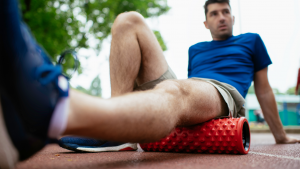No products in the cart.
Bike Fit: Cleat Replacement
The most commonly neglected piece of equipment in cycling that we see during our Retul bike fits are cleats. When riding we frequently clip in and out wearing the engagement points, walk on them, drag them across the ground as stopping (don’t do that!) and quite frankly I believe we forget they even exist. Whether you are riding 10 miles at a time or hundreds of miles at a time these little pieces of plastic and metal play a much more important role than you might know.
In bike fitting we focus on decreasing the risk of injury while trying to balance the ability to produce power and optimize a rider’s position for aerodynamics. These factors might not all be important to you but for everyone who rides we know that injury prevention is a priority. This injury prevention is directly correlated to position and quality of your points of contact with your bike. Your first point of contact with the bike is the pedals and with cleats these are not able to be changed while pedaling. With this being the case it becomes more important to make sure your first point of contact with the bike is at its best.
Even with a proper bike fitting riders with overly worn cleats can begin to notice signs of discomfort including, but not limited to, foot numbness, knee pain and hip pain. If this becomes severe enough it could ultimately lead to time off the bike and away from training. A newer set of cleats increases the stability of the foot’s positioning with the pedal which provides a solid foundation for a fitting to be based on.
There are many factors that play into cleat wear with include how much you walk on them, the quantity of training and if you have any pedaling irregularities which create greater friction. There are several signs though that you can look for to verify the state of urgency.
Shimano Cleats – With a very simple colored marker on the cleat (typically yellow), you can tell when these cleats are worn by the changes in the cleat.
Look Style Cleats – These are very common cleats and are frequently under maintained. There is no clear marker on these. With the “gripper” style cleats once the rubber is gone you need to replace them. Non-gripper cleats do not have an indicator so you will need to pay closer attention to and replace once they begin to get roughed up.
SpeedPlay Cleats – The metal plate does not make these invincible! These cleats hold up a bit better than either of the other styles, however, if you wait too long you increase the risk of not being able to get the screws out. Once these begin to wear or once you notice visible wear on the inner circle of the cleat it is time to replace the cleat.
If you are unsure of whether you need to purchase new cleats you can bring them in to Science of Speed or take the to your LBS for a knowledgeable opinion.
– On Resin based pedals, without a metal plate where the cleat contacts, it becomes even more important to regularly replace your cleats. Any wear or roughness of the cleat acts like sandpaper and can create grooves in the surface of your pedal forcing you to buy new pedals sooner than you might have hoped.– Not replacing your cleats frequently enough can result to unclipping under higher loads whether sprinting or pedaling hard.





